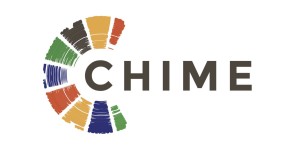 A position paper (no. 1) presented to the CHIME project team meeting, Amsterdam Conservatory, February 4 2016
A position paper (no. 1) presented to the CHIME project team meeting, Amsterdam Conservatory, February 4 2016
Here are the opening sentences of the EU Heritage+ joint call grant application that the project team wrote in 2014, and which formed the basis of CHIME’s successful submission.
‘What an amazing experience, the clash of seeing Miles Davis in the Roman amphitheatre during the Nice Jazz Festival. The ancient stones and arches are re-sounded, the music somehow more resonant, old and modern at the same time. I’ll never forget that.’ This first-hand experience of a European festival-goer provided the initial inspiration for CHIME.
I (George McKay) want to interrogate the cultural space we have chosen a little further, which I hope will throw further light on my question, why look at jazz (and not, say, rock or folk) festivals?
There was a nice line tweeted on the CHIME Twitter feed recently, a quotation from Chris Goddard’s book Jazz Away From Home that sought to describe the experience of jazz in southern Europe, as a music ‘cut[ting] through the warm, humid Mediterranean night like a chainsaw through cheese’ (1979). Is jazz more cheese wire than chainsaw, do you think, though? If we want chainsaw music we need really to go to something more industrial—or agricultural—starting with the excessive, aggressive culture of rock music. Rock does after all sometimes feature a chainsaw: see southern US rock band Jackyl, who still finish each live set with their signature song ‘The lumberjack’ (the video is great and indeed a little Pythonesque, do have a watch) in which the lead singer does a chainsaw solo (though not through cheese). (Here is a pressing question for the New Jazz Studies: has a jazz band featured a chainsaw solo, ever?)
So, for questions of the clash or disjunction between heritage, festival site and popular music, the jarring re-sounding when both our ears double-take in stereo, rock music would be very good to think about. Though its history as a popular music has been shorter than folk or jazz (50-60 years as opposed to 100-120, very approximately)—does that mean its heritage is reduced?—rock music can supply a very powerful shock of the new, not least through its characteristic of being superloud, via a practice of extreme volume and a competitive rather than functional culture of amplification. (Even to the extent of rock deafening its bands and fans: McKay 2013, chapter 4.) And its use of chainsaws.
In order to pursue the comparison with Miles in the amphitheatre in Nice, consider an archetypal rock festival-style concert / documentary film, Pink Floyd: Live at Pompeii (concert 1971, film 1972). (See film extract at end of blog below.)
- Filmed with the band playing live, over 4 days in October
- Used their full and extensive tour amplification
- Performances were filmed in front of no audience, an empty auditorium (rationale: in part a reaction against festival films like Woodstock, which had contained so many shots of festival-goers, the crowd)
- It’s a slow, spacey music the band plays, with some slow and lengthy camera focuses in/out and pans (2-3 minutes)
- Located in the ancient Roman amphitheatre and with a backdrop of Vesuvius
- Some key resonances: volcano/volume; block architecture of amphitheatre/PA/amp stacks
- Grandeur of the location fits with the grandeur (or pretentiousness) of Pink Floyd’s musical vision and its filming. (To return to the comedic end of rock, we could think here instead of Spinal Tap and their Stonehenge stage.)
Or consider Glastonbury Festival, originating at much the same time as the Pink Floyd concert (legendary Glastonbury Fayre was held in 1971, also filmed). Near Glastonbury, in the deep green English countryside, there is the invention of tradition and what I’m calling the instant ancient: mist and myth, a stage in the shape of the Great Pyramid of Giza, set on a ley line, with a crystal on top, a Neolithic stone circle—built around 1990. Read More





